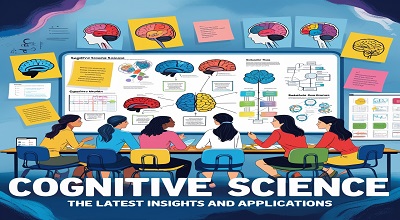Cognitive Science for Teachers
Cognitive Science for Teachers: Cognitive science is an interdisciplinary field that explores how the brain processes, retains, and retrieves information. For teachers, understanding cognitive science is crucial because it provides evidence-based strategies to enhance learning, memory, and student engagement.
In this comprehensive guide, we’ll explore the latest research in cognitive science and how teachers can apply these findings in the classroom. Whether you’re an educator looking to refine your teaching methods or a school leader aiming to implement cognitive science-based strategies, this post will provide actionable insights.
What is Cognitive Science?
Definition and Key Components
Cognitive science combines psychology, neuroscience, linguistics, philosophy, and artificial intelligence to study how the mind works. Key areas include:
- Memory – How information is encoded, stored, and retrieved.
- Attention – How focus impacts learning.
- Problem-Solving – How students approach challenges.
- Language Acquisition – How we learn and process language.
Why It Matters for Teachers?
Understanding cognitive science helps teachers:
- Design lessons that align with how the brain learns.
- Implement strategies to improve long-term retention.
- Reduce student frustration by optimizing cognitive load.
Latest Research in Cognitive Science for Education
Memory and Learning
Recent studies emphasize:
- Spaced Repetition – Distributing learning over time improves retention.
- Interleaving – Mixing different topics enhances understanding.
Attention and Focus
- The average attention span is shorter than believed (approx. 10-20 mins for complex tasks).
- Strategies: Use brief, engaging activities to maintain focus.
Metacognition and Self-Regulated Learning
Teaching students to think about their thinking improves academic performance.
Read More: Neuromorphic Computing
Practical Applications in the Classroom
Spaced Practice vs. Massed Practice
- Spaced Practice: Review material over several sessions (better for long-term memory).
- Massed Practice (Cramming): Less effective, leads to quick forgetting.
Retrieval Practice Techniques
- Flashcards, Quizzes, and Brain Dumps force recall, strengthening memory.
Dual Coding and Multimedia Learning
- Combine words and visuals (e.g., diagrams + explanations) for deeper understanding.
Cognitive Load Theory (CLT) and Its Impact
Types of Cognitive Load
- Intrinsic – Difficulty of the subject itself.
- Extraneous – Poorly designed instruction (e.g., distracting slides).
- Germane – Mental effort used for learning.
How to Reduce Cognitive Overload
- Break lessons into smaller chunks.
- Use worked examples before independent practice.
Neuroscience and Classroom Strategies
The Role of Sleep in Learning
- Sleep consolidates memories; students who sleep well perform better.
Emotional States and Memory Retention
- Positive emotions enhance learning; stress impairs it.
Technology and Cognitive Science
AI and Adaptive Learning
- AI-powered tools personalize learning based on student performance.
Gamification for Enhanced Engagement
- Points, badges, and leaderboards increase motivation.
Common Myths and Misconceptions
Learning Styles Debunked
- No strong evidence supports tailoring teaching to visual/auditory/kinesthetic learners.
The Truth About Multitasking
- The brain doesn’t truly multitask—it switches tasks inefficiently.
Future Trends in Cognitive Science for Education
Personalized Learning Pathways
- AI-driven customization based on cognitive profiles.
Neuroeducation and Teacher Training
- More professional development on brain-based teaching strategies.
Conclusion
Cognitive science provides powerful tools for educators. By applying evidence-based strategies like spaced practice, retrieval practice, and dual coding, teachers can significantly enhance student learning.
Free Here: Furries Dr. Doe’s APK
